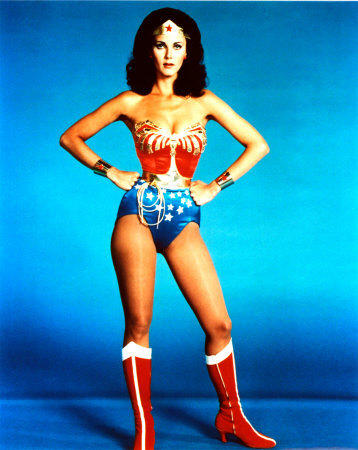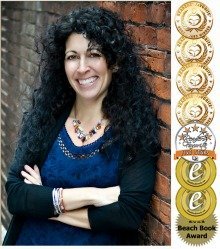 Most writers know that characters need to be three-dimensional, but where many fall short is understanding exactly what that means. Think of your favorite characters from books you’ve read. What drew you to them? Why did you choose those specific characters as opposed to others? Chances are, they were a bit complex, and creating complex characters is what we strive for—complex and yet somehow easy to relate to.
Most writers know that characters need to be three-dimensional, but where many fall short is understanding exactly what that means. Think of your favorite characters from books you’ve read. What drew you to them? Why did you choose those specific characters as opposed to others? Chances are, they were a bit complex, and creating complex characters is what we strive for—complex and yet somehow easy to relate to.
By the time we meet our characters, they are of a certain age, with developed careers (or not), maybe they’re students, or maybe they’re homeless. The question is, how did they get there? Characters must all have HISTORY, they must have a background, and developing that background so that you, the author, know how they came to be is, in my opinion, the most important thing that you can figure out, as an author. The background does not need to be rehashed in the book, but it somehow plays into who they are. Real people accumulate thoughts and opinions based on things they’ve read, seen, encountered—and so should your characters.
Sometimes, the history of a character is developed after the PERSONALITY is developed, and that’s okay, as long as, at some point, you can know why your character hates the summer or why they hate politics or love sex on the beach. Remember to give your characters positive and negative traits. No one is likable all the time—that would be unbelievable, and really, the less complex your characters are, the less likely your reader will be pulling for them.
point, you can know why your character hates the summer or why they hate politics or love sex on the beach. Remember to give your characters positive and negative traits. No one is likable all the time—that would be unbelievable, and really, the less complex your characters are, the less likely your reader will be pulling for them.
FLAWS & UNIQUENESS are an important aspect of character development. What makes the character unique? Are they too shy or overly aggressive? What makes them unique—different from a cardboard cutout of a pretty princess or a perfect prince? Let them limp, let their voices be raspy or too high. Give them bad hair, warts, make them quirky and interesting. Flaws make us unique, and our uniqueness is what makes us endearing.
Let your characters experience things that you might shy away from. Danger and INSURMOUNTABLE ODDS only adds to the strength of your character as they overcome their issues and barriers. Let them BE HUMAN. We are all wrong at times, we misspeak, we hiccup, we cough. The more human your characters are, the more relatable they will be for the reader.
Remember to SHOW and NOT TELL. There’s nothing more boring than reading, “Carl was pissed.” SHOW your readers what the characters look like instead. “Carl hurled the heavy book across the room, missing me by mere inches before slamming against the door behind me.” Don’t bore the reader with descriptions of hair color, clothing, and eyes. How often do you notice a person’s eye color when you walk in a room? If you’re like me, you notice SMELLS, SOUNDS, BODY LANGUAGE. Use sensory items to describe people.
If you think of characters are real people, think of the way they move, their style, the presence that they put forth, then you’ll probably be able to draw up an outline of the character, add the background, and situate them into your storyline much easier than going on looks alone.
I hope this helps. I’m not an expert author, but I’m happy to share the few things I have learned along the way. If you’d like to chat about writing—leave a comment or drop me an email.
 Melissa Foster is the award-winning author of three International bestselling novels, Megan's Way, Chasing Amanda, and Come Back to Me. She has also been published in Indie Chicks, an anthology.Melissa is on the advisory board for the Alliance of Independent Authors and is a touchstone in the indie publishing arena. When she’s not writing, Melissa teaches authors how to navigate the book marketing world, build their platforms, and leverage the power of social media, through her author-training programs on Fostering Success. Melissa is the founder of the World Literary Café, Fostering Success, and the Women’s Nest. She has been published in Calgary’s Child Magazine, the Huffington Post, and Women Business Owners magazine. Melissa is currently collaborating on the film adaption of Megan’s Way.
Melissa Foster is the award-winning author of three International bestselling novels, Megan's Way, Chasing Amanda, and Come Back to Me. She has also been published in Indie Chicks, an anthology.Melissa is on the advisory board for the Alliance of Independent Authors and is a touchstone in the indie publishing arena. When she’s not writing, Melissa teaches authors how to navigate the book marketing world, build their platforms, and leverage the power of social media, through her author-training programs on Fostering Success. Melissa is the founder of the World Literary Café, Fostering Success, and the Women’s Nest. She has been published in Calgary’s Child Magazine, the Huffington Post, and Women Business Owners magazine. Melissa is currently collaborating on the film adaption of Megan’s Way.
Melissa hosts an annual Aspiring Authors contest for children, she's written for Calgary's Child Magazine and Women Business Owners Magazine, and has painted and donated several murals to The Hospital for Sick Children in Washington, DC. Melissa lives in Maryland with her family. Melissa's interests include her family, reading, writing, painting, friends, helping women see the positive side of life, and visiting Cape Cod.
Facebook: http://www.facebook.com/pages/MelissaFosterAuthor
Twitter: @Melissa_Foster
My social network for women: http://www.TheWomensNest.com
World Literary Café: http://www.worldliterarycafe.com
Fostering Success: htto://www.fostering-success.com
Facebook Melissa Foster: http://www.facebook.com/MelissaFosterAuthor (Fanpage)
Goodreads http://www.goodreads.com/author/show/3023973.Melissa_Foster




 Melissa Foster is a New York Time and USA Today bestselling and award-winning author. She writes contemporary romance, new adult, contemporary women's fiction, suspense, and historical fiction with emotionally compelling characters that stay with you long after you turn the last page.
Melissa Foster is a New York Time and USA Today bestselling and award-winning author. She writes contemporary romance, new adult, contemporary women's fiction, suspense, and historical fiction with emotionally compelling characters that stay with you long after you turn the last page.